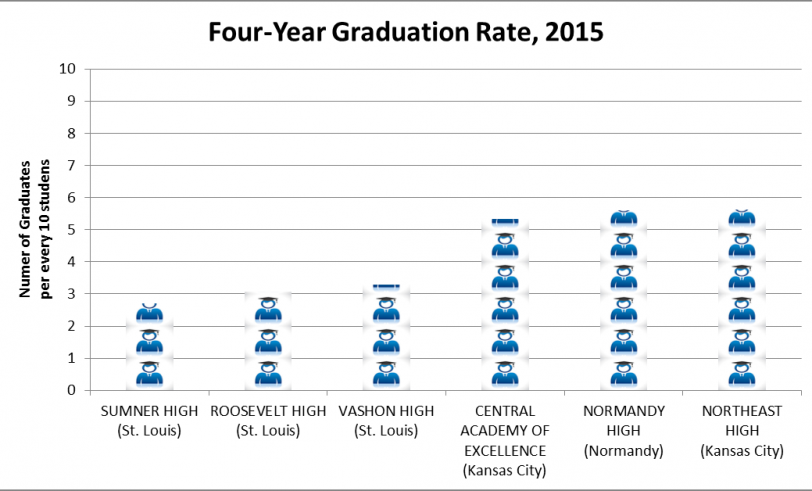Denying Evidence, Denying Opportunity

Fewer than three out of ten students who enter Saint Louis' Sumner High School in ninth grade will graduate from the school within four years. In all, there are six high schools in Missouri where fewer than 60 percent of students graduate on time. Fortunately, students in the Kansas City and Saint Louis School Districts have magnet schools and charter schools as an option. In Normandy, students have no such options. They are stuck. Keep this in mind as you read this post.
Recently, the Center for Public Education, an arm of the National School Boards Association, released a report on the merits of school choice. The paper claims to summarize “what the research says.” Interestingly, the report fails to include almost every analysis that has found benefits to private school choice programs.
When Anna Egalite, an assistant professor of educational leadership, policy, and human development at North Carolina State University, conducted a systematic review of the competitive effects of private school choice programs, she found 21 studies. She concluded that the results “unanimously find positive impacts on student achievement. Such overwhelming evidence supports the development of market-based schooling policies as a means to increase student achievement in traditional public schools.” Interestingly, the Center for Public Education did not cite any of these studies.
Similarly, there have been 12 random-assignment studies of voucher programs. These are considered the “gold-standard” in social science research because they are the best at determining causality. Eleven of the 12 studies have found positive effects from voucher programs. The Center for Public Education review only cites one of these studies.
The report cites plenty of useful statistics from the National Center for Education Statistics and other sources, but does not even attempt to cite the plethora of useful research on school choice programs.
Nevertheless, the report does get at least one thing right—private school choice tends to boost graduation rates. This was highlighted in the evaluation of the Washington D.C. Opportunity Scholarship program, which showed a 21 percentage point increase in the graduation rate for voucher users.
Not surprisingly, given that they neglect to cite any of the ample evidence showing that school choice succeeds, the Center's conclusion is that “In general, we find that school choices work for some students sometimes, are worse for some students sometimes, and are usually no better or worse than traditional public schools.”
In addition to simply being inaccurate, this conclusion does a great disservice to the students most in need of another educational option; particularly the students in the six Missouri school districts with the worst graduation rates (see above).
School choice may not be a cure-all, but the evidence is quite clear: students benefit from school choice. Indeed, students at Sumner and the other schools listed above may benefit the most.

